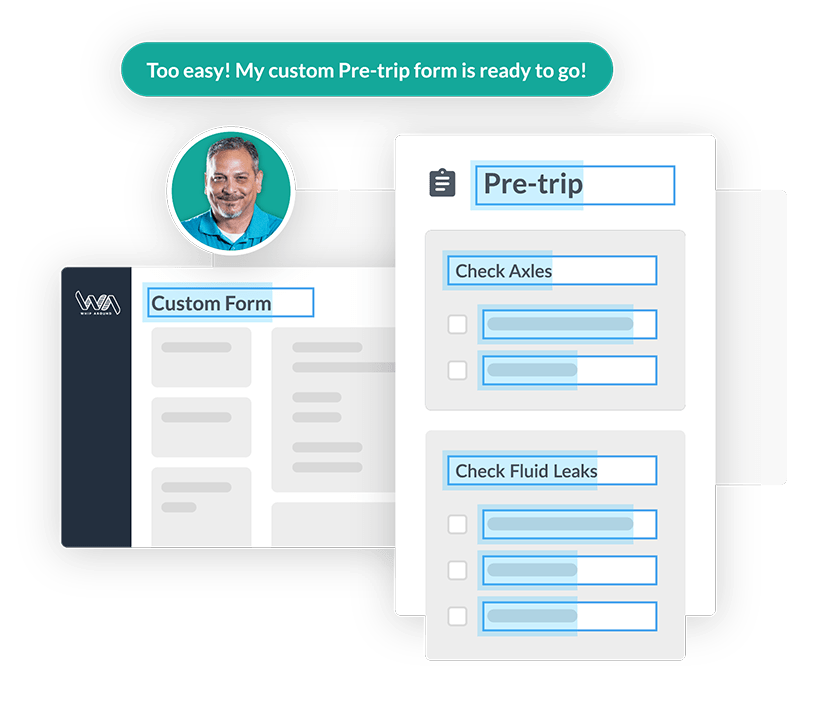Managing the transport of heavy equipment from time to time? There are several tie-down requirements outlined by the FMCSA to know about in order to stay compliant in addition to commercial motor vehicle inspection requirements you may already be familiar with.
In this post, we’ll cover a few best practices for securing heavy equipment with tie downs, and what to know about these federal regulations.
What to know about tie-down and load securement regulations for heavy equipment
In the area of load securement, one of the things to understand is that the DOT’s enforcement and safety agency, the FMCSA, has outlined specific regulations for heavy equipment when it comes to transport.
In addition to non-specific tie down regulations that apply to most motor carriers, there are also commodity-specific tie-down regulations to be aware of, like in the case of heavy construction equipment.
When it comes to heavy equipment typically used in construction, section § 393.130 outlines these additional regulations.
What’s the number of tie-downs required for heavy equipment?
General regulations specify that when loading heavy equipment over 10,000 pounds, the FMCSA requires a minimum four tie-downs to be used on independent corners. For vehicles like excavators, the appendage will also need an existing tie down when lowered.
Some manufacturers include hook spots specifically for securement. These regulations also specify when an additional tie down is needed, as in the case for boom loaders and other accessories without a transport lock.
The video below outlines this process.
Working load limit
When it comes to securing heavy equipment, one important concept to know about in order to ensure your equipment stays in control is an understanding of working load limit (WLL).
FMCSA Expert and Inspector John Seidl explains that the working load limit is “The maximum load that may be applied to a component of cargo securement system”. A component like a strap will have a WLL rating.
These tie downs combined must be rated to support at minimum ½ times the weight of the cargo.
A quick example
For 30,000 pounds of cargo (for example), you must secure one half of the total weight, or at least 15,000 pounds. With four tie downs on each corner, these must have a working load limit rated at a minimum of 3,750 pounds.
Binders are also rated and marked, and are required to meet the minimum standard of the working load limit of the chain you are using.
The video below does a good job of explaining this concept you can check out:
As always, be sure to refer to the FMCSA’s Cargo Securement Rules here for more detailed information on working load limits.
8 things to know about tie-downs and cargo securement for heavy equipment
- Boom loaders require a separate tie down for accessory equipment with some exceptions for smaller equipment or equipment with a transport lock.
- Loose chains or damaged chains should always be inspected and replaced if necessary
- For machinery, anything less than 10,000 pounds requires (1) tie down in the front and (1) tie down in the rear
- To satisfy federal regulations, as long as tie downs have a weight rating, you may use chains or straps.
- Equipment manufacturers typically have their own securement specifications and tie down points to be aware of
- Flags or lights at night may be required if equipment extends 4-inches over the side, or 4 feet beyond the rear
- When in doubt, it’s always a good practice to use another chain or strap
- Use a chain gauge to monitor your chain’s links, especially for load-bearing portions
Inspect your tie-downs to ensure compliance
When it comes to keeping your equipment safe, daily pre and post-trip inspections are obviously very important to complete, even for vehicles not bound by DOT inspection regulations.
Since tie downs are so critical and required by law for heavy equipment, building this process into your inspection routine is important for prioritizing safety of your assets on the roads.
Not only will this give managers and owners insight into how drivers are securing equipment, it also can help to ensure you are staying compliant by reviewing images that drivers submit through the mobile app. This is another safeguard to ensure everything is properly secured with tie-downs and to catch any errors over time.
The benefits of using the Whip Around app for heavy equipment inspections

While inspection checklists can get extensive, the benefit of utilizing Whip Around is that you can create custom inspection forms for different components of your trailer.
While you may want to require inspection on the 4 required tie-down points each day equipment is in use, you can also create custom forms to be used less frequently throughout the week or month.
One example to include are chain inspections that you can prompt drivers to complete on a periodic basis to ensure integrity.

“Just like you inspect your truck or pre-trip your truck, you need to pre-trip or check your load securement.”–Officer Brent Hoover, Indiana State Police Trooper, member of the Indiana State Police’s Commercial Vehicle Enforcement Division.
To see how fleet managers and contractors are gaining peace of mind when it comes to inspecting and maintaining heavy equipment using Whip Around, request a demo with a product specialist to learn how easy this process can be.









